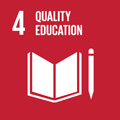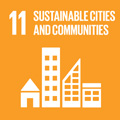- Docente: Anna Rosellini
- Credits: 6
- SSD: ICAR/18
- Language: Italian
- Teaching Mode: Traditional lectures
- Campus: Bologna
- Corso: Second cycle degree programme (LM) in Visual Arts (cod. 0977)
Learning outcomes
After completing the course, the student has basic knowledge necessary to understand and interpret the processes of ideation, realization and fruition of contemporary architectures and exhibition spaces through the study of works, personalities and significant issues. In particular, the student acquires a personal capacity for research, the methodology to detect, historically locate and critically evaluate the major issues related to the processes of ideation and fruition of the exhibition space, and the contributions of artists who have helped to clarify decisive concepts for architecture.
Course contents
The course aims to deal with the major issues related to museum architecture and the conception of contemporary exhibition spaces in order to historically contextualize them, and provide students with the critical tools and the methodological-artistic knowledge necessary to understand and interpret the processes of designing Museums and exhibitions. This course will deal with: the main issues related to the museum architecture of the 20th and 21st centuries - particularly referring to museums for contemporary art -; the different contexts related to the realization of exhibition spaces; the events, the works and the key personalities for the evolution of the exhibition space architecture. More specifically:
• Le Corbusier's "promenade" for the knowledge of art
• The Museum of Modern Art in New York
• The spiral around the void in Wright's Guggenheim Museum
• Museums of Mies van der Rohe
• The museums spatial structures of Kahn and Bo Bardi
• Hypothesis for a dissolution of the idea of a museum: alternative spaces and Radical Architecture
• The Post-Modern and the return to the museum tradition
• Koolhaas and the museum's heterotopia
• Herzog & De Meuron, Lacaton & Vassal, Office KGDVS and the research on the contemporary museum
Cycle of conferences
The contents of the conferences will be the subject of examination
The international workshop is composed of conferences that examine the role of the architecture exhibition as a place for theoretical discussion and elaboration of experimental projects. Historical examples are related to contemporary practices in order to highlight how the exhibition can become a place of experimentation on the founding thought of every meaningful work, and how it can also contribute to the definition of the theoretical and cultural background of architecture.
FABIO MASSACCESI (Università di Bologna) in dialogo con MASSIMO MEDICA (Musei Civici d’Arte Antica)
16.01.2020, h 14:00, Museo Civico Medievale, via Manzoni n. 4
Le croci monumentali e il loro contesto architettonico. Riflessioni a margine di una mostra
ROBERTO GIGLIOTTI (Libera Università di Bolzano)
27.02.2020, h 16:00, DAMSLab, sala seminari, Piazzetta P. P. Pasolini, 5/b, Bologna
The spaces of architecture’s narration as a field of experimentation.
The case of ar/ge kunst, Bolzano
ÉRIC LAPIERRE (Éric Lapierre Experience - http://www.ericlapierre.com, EPFLausanne, ENSA Marne-la-Vallée, Paris-Est)
27.03.2020, h 16:00, DAMSLab, sala seminari, Piazzetta P. P. Pasolini, 5/b, Bologna
Popular Education – How Form Improves Thought
ANNA ROSELLINI (Università di Bologna)
17.04.2020, h 16:00, DAMSLab, sala seminari, Piazzetta P. P. Pasolini, 5/b, Bologna
Madelon Vriesendorp in dialogo con Lina Bo Bardi
VERONIQUE PATTEEUW (ENSA Lille, KULeuven)
24.04.2020, h 16:00, DAMSLab, sala seminari, Piazzetta P. P. Pasolini, 5/b, Bologna
Postmodernism and the return to drawings
AMBRA FABI E GIOVANNI PIOVENE (Piovenefabi - http://www.piovenefabi.it, ENSA Marne-la-Vallée, Paris-Est)
04.05.2020, h 16:00, DAMSLab, sala seminari, Piazzetta P. P. Pasolini, 5/b, Bologna
What is Ornament?
Readings/Bibliography
Attending students
Hal Foster, Il complesso Arte-Architettura, postmedia books, Milan, 2017
Calum Store, Delirious Museum, un viaggio dal Louvre a Las Vegas, Johan & Levi editore, London, 2017
Non-attending students
Hal Foster, Il complesso Arte-Architettura, postmedia books, Milan, 2017
Calum Store, Delirious Museum, un viaggio dal Louvre a Las Vegas, Johan & Levi editore, London, 2017
Course text available for the students.
Attending students and non-attending students
- Recommended reading
W. J. R. Curtis, L'architettura moderna dal 1900, Phaidon, London, 2006
Charles Jencks, Musei. Le nuove cattedrali, Medusa Edizioni, Milano, 2016
Teaching methods
Lectures
Assessment methods
Attending students
Oral exam on the topics discussed during the course and on the contents of the bibliography
During the oral exam, students must demonstrate to have acquired a critical understanding of the topics discussed during the course and a critical knowledge of the bibliography.
Non-attending students
Oral exam. To pass it, students are required to demonstrate that they have acquired a critical knowledge of the topics discussed during the course and a critical knowledge of the bibliography.
Attending and non-attending students
It will be assessed as excellent the performance of those students achieving an organic vision of the course contents, the use of a proper specific language, the originality of the reflection as well as the familiarity with the tolls for analyzing the art works of the museum architecture.
It will be assessed as average the performance of those students showing mostly mechanical or mnemonic knowledge of the subject, not articulated synthesis and analysis capabilities, a correct but not always appropriate language, as well as a scholastic study of the history of architecture. It will be assessed as barely sufficient the performance of those students showing learning gaps, inappropriate language, lack of knowledge of the history of architecture. It will be assessed as insufficient the performance of those students showing learning gaps, inappropriate language, no orientation within the recommended bibliography and inability to analyse the architecture.
Teaching tools
Students will be given the images projected during the lectures and part of the bibliography.
Links to further information
https://www.facebook.com/groups/HistoireArchitectureHistoireBeton/
Office hours
See the website of Anna Rosellini
SDGs


This teaching activity contributes to the achievement of the Sustainable Development Goals of the UN 2030 Agenda.
